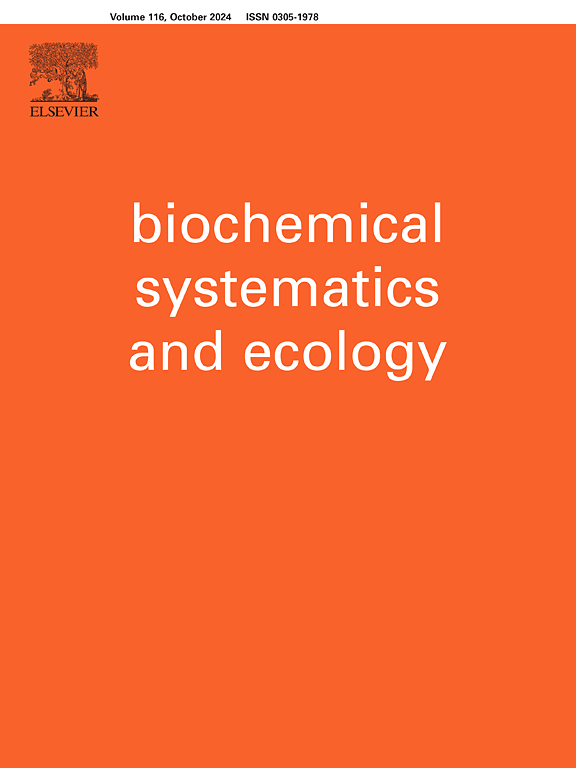Seasonal variation in the chemical composition, antimicrobial and antioxidant potential of Aloysia gratissima leaves essential oil
IF 1.4
4区 生物学
Q4 BIOCHEMISTRY & MOLECULAR BIOLOGY
引用次数: 0
Abstract
This study aimed to evaluate the effect of seasonality on the chemical composition and the antimicrobial and antioxidant activities of the essential oil from Aloysia gratissima leaves (AGO). The essential oils were extracted from dried and crushed A. gratissima leaves using hydrodistillation. The chemical composition of AGO was analyzed by gas chromatography-mass spectrometry (GC-MS). Antioxidant activity was assessed using the DPPH assay, while antimicrobial activity was determined by the minimum microbicidal concentration method. Across the four seasons, 33 to 45 chemical compounds were identified, accounting for 93.76 %–97.92 % of the oils. Among these, β-pinene, pinocamphone and trans-pinocarvyl acetate were predominant in three seasons, whereas guaiol was the major compound exclusively in autumn. The essential oils exhibited promising antimicrobial activity, particularly against Staphylococcus aureus and Bacillus cereus. This study represents the first seasonal characterization of the chemical composition and biological activities of AGO in Brazil.

求助全文
约1分钟内获得全文
求助全文
来源期刊

Biochemical Systematics and Ecology
生物-进化生物学
CiteScore
3.00
自引率
12.50%
发文量
147
审稿时长
43 days
期刊介绍:
Biochemical Systematics and Ecology is devoted to the publication of original papers and reviews, both submitted and invited, in two subject areas: I) the application of biochemistry to problems relating to systematic biology of organisms (biochemical systematics); II) the role of biochemistry in interactions between organisms or between an organism and its environment (biochemical ecology).
In the Biochemical Systematics subject area, comparative studies of the distribution of (secondary) metabolites within a wider taxon (e.g. genus or family) are welcome. Comparative studies, encompassing multiple accessions of each of the taxa within their distribution are particularly encouraged. Welcome are also studies combining classical chemosystematic studies (such as comparative HPLC-MS or GC-MS investigations) with (macro-) molecular phylogenetic studies. Studies that involve the comparative use of compounds to help differentiate among species such as adulterants or substitutes that illustrate the applied use of chemosystematics are welcome. In contrast, studies solely employing macromolecular phylogenetic techniques (gene sequences, RAPD studies etc.) will be considered out of scope. Discouraged are manuscripts that report known or new compounds from a single source taxon without addressing a systematic hypothesis. Also considered out of scope are studies using outdated and hard to reproduce macromolecular techniques such as RAPDs in combination with standard chemosystematic techniques such as GC-FID and GC-MS.
 求助内容:
求助内容: 应助结果提醒方式:
应助结果提醒方式:


